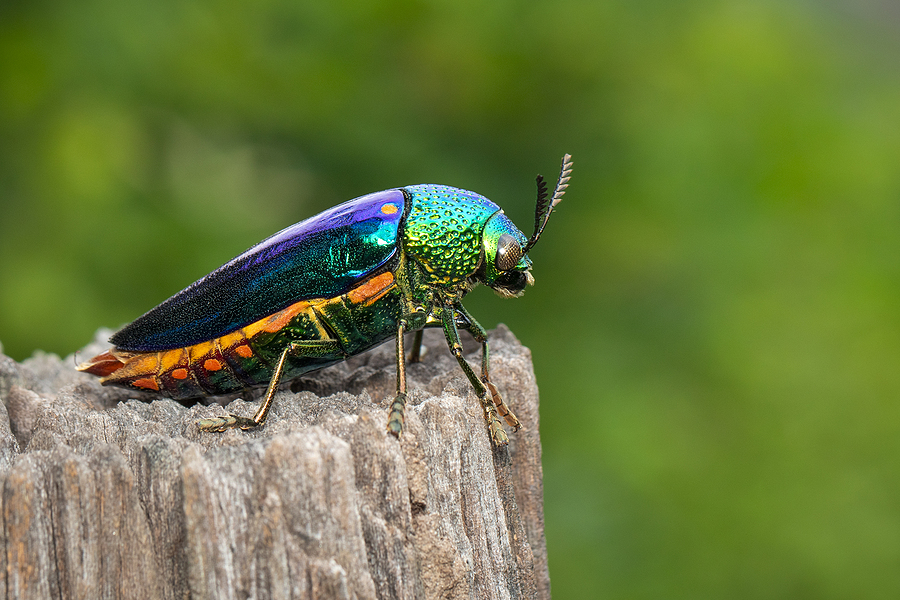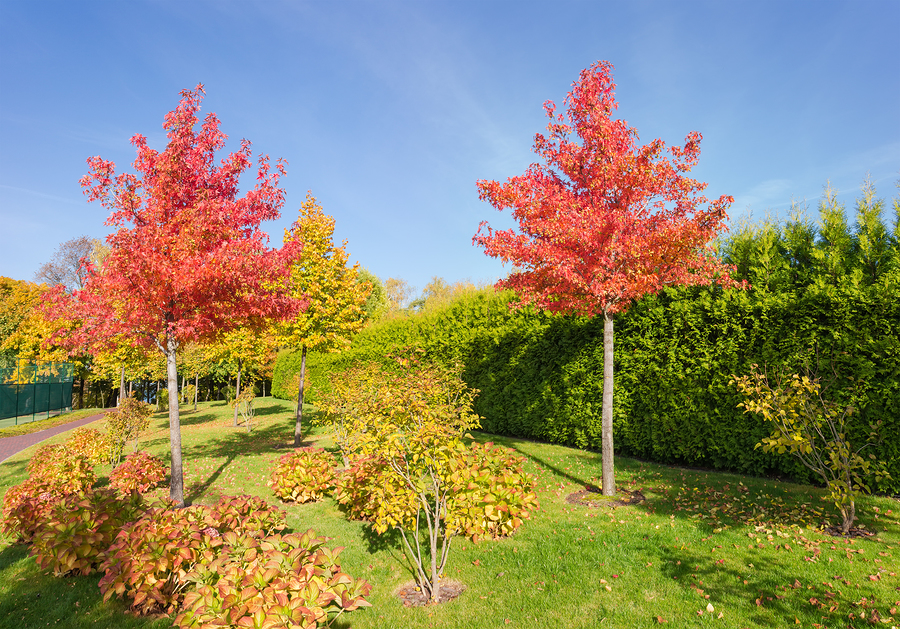The frustrating thing about wood-boring insects is that you can’t always see the scope of damage they cause to your trees. Just below the bark of your favorite landscaping tress might lie an infestation of tree-boring beetles that you never knew were there! There are various species of wood-boring insects and beetles, some of which are a minor threat, while others are highly invasive and detrimental to trees. It is important to stay on top of routine tree care in order to catch a small infestation problem early on, before your tree can get sick, or worse, die.
Continue reading to learn more about wood-boring beetles, and which ones are known to target trees.

Wood Borers and Tree Health
Although wasps and moths are known to target wood, and therefore, trees, beetles take the cake for the most invasive and damaging. The most common wood-boring beetle is aptly named the Emerald Ash Borer, and targets mostly Ash trees, but can also infest other trees as well. Other common wood-borers include:
? Emerald Ash Borer (EAB)
? Redheaded Ash Borer
? Red Oak Borer
? Cottonwood Borer
? Locust Borer
Adult beetles bury below the bark, deep into the tree’s inner tissue, and then lay their eggs. They are also clever enough to use existing cracks in the bark and inner tissue when wood is too hard to bore. This is another reason why you want to take good care of your trees! Once the eggs are laid, the damage to the tree instantly becomes exponential since the larvae feeds on the bark. They tunnel all through the inner tissue, eating more and growing fatter.
As a result, the tree’s structured is weakened, causing the tree to continually lose its ability to properly distribute water and nutrients, thus causing it to enter a state of decline. In fact, an infested tree will often times have sawdust and debris at its base, providing prime evidence of borer larvae and beetles. Small L-shaped or D-shaped exit holes are another common sign of a wood-borer infestation.
Signs of a Tree-Borer Infestation
It is important to catch a beetle infestation early on through professional, routine tree service. Because their existence can go unnoticed for so long, most cases of wood-borer infestations are not treatable. However, in early cases of infestation, treatment is possible so long as it is done immediately. There are several ways to identify a wood-borer infestation in trees and other foliage. Their movements and behaviors leave clues behind that can only suggest a wood-boring beetle problem. Here are the common signs and symptoms of a tree infected and overcome with borer colonies:
- Splitting Bark
- Canopy Thinning and Die-Back
- Foliage Bareness
- Vertical Fissures on Bark
- Callous Tissue Formation
- Exposed Galleries under Bark Split
- Serpentine-Shaped Larvae Feeding Galleries in Bark
- Frass Accumulation (Mix of Saw Dust and Excrement)
- D-Shaped Holes in Trunk
- Increase Woodpecker Activity
- Sprout Growth from Roots and Trunk
- Larger-than-Normal Leaves
Indianapolis Indiana Tree Service You Can Afford
Call Complete Tree Care at 317-783-2518 for prompt and professional Indianapolis tree service you can trust. We are experienced tree care technicians that can resolve your tree problems, regardless of your projects size or scope. We offer a wide range of tree removal and tree services, for both residential and commercial properties. We even offer free estimates and free tree care advice!


